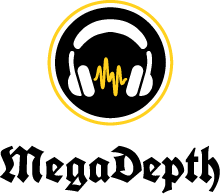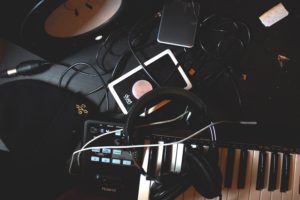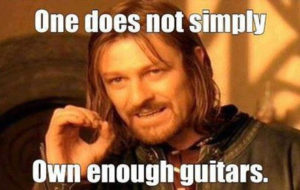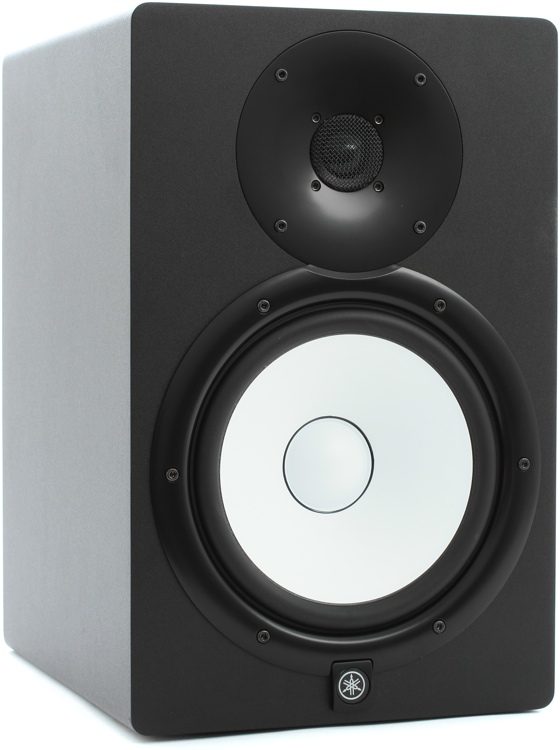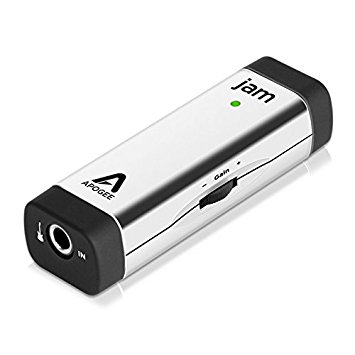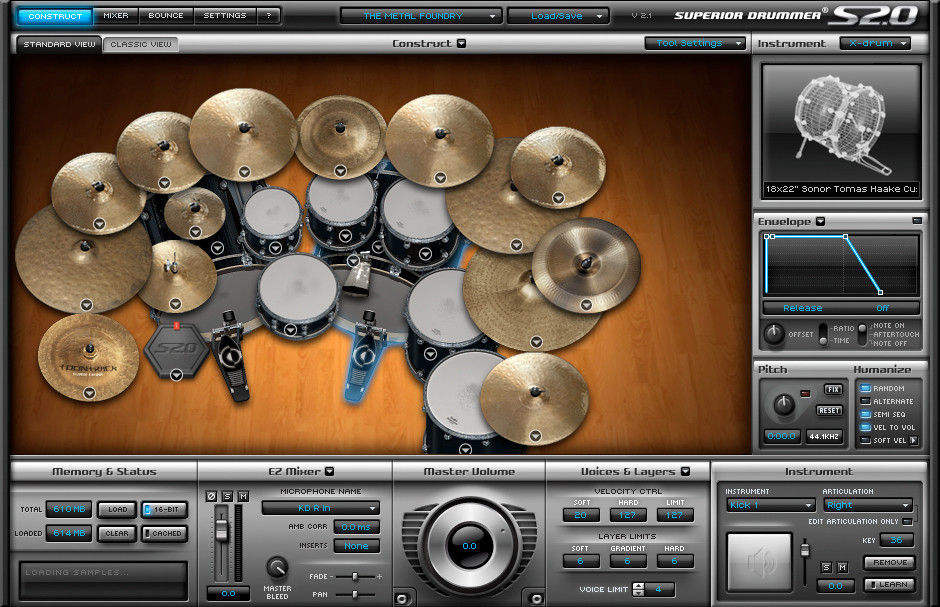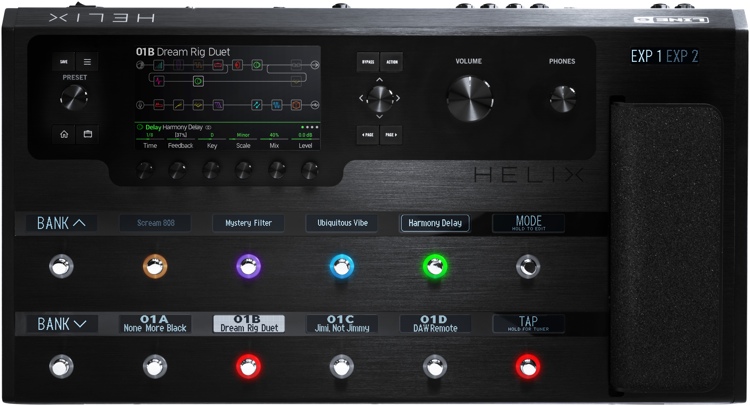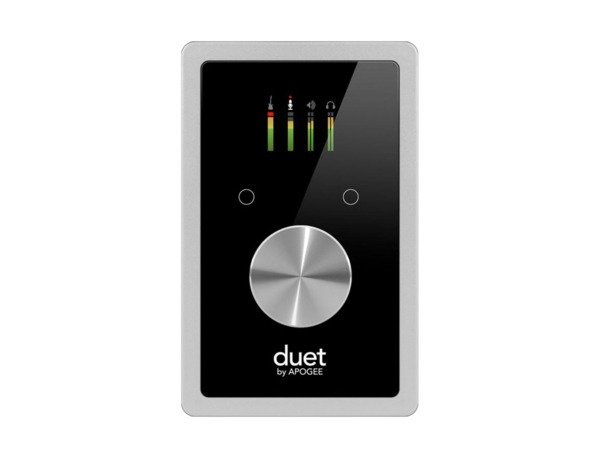As we are about to leave another year behind, I would like to reflect on 2017. There are so many things we can talk about… best albums of the year, best live bands of the year, artists we lost in 2017, etc. They’re all interesting topics, but I’ll save them for another time. As you know, one section of this site is dedicated to “Gear Talk”; a place where I talk about musical equipment – and I’ve got a lot to contribute there. I’ve acquired some new gear in 2017 – some I’d always wanted, some I recently found out about – and I’m going to share with you what these are and how I’ve been using them. And just to clarify, when I say “gear”, I include anything and everything that has helped improve my tones and home recording experience.
The notion of choosing equipment that is right for you is fairly new to me. For a long time, I didn’t really pay attention to what my needs were. Instead, I went with whatever some of my favorite artists were using. Sometimes this approach can also teach you a lot about gear, as it did for me, but it doesn’t necessarily mean what works for them will also work for you.
To be honest, it wasn’t until this past year that I truly sought what would help me reach my musical goals. I paid no attention to what anyone else was using. I mostly just read and watched reviews from people whose opinions I trusted. After all, we may all be music or guitar enthusiasts, but we’ll all need slightly different equipment depending on our upcoming projects or body build.
In late 2016, I started taking guitar lessons for the third time in my life. I’ve been really lucky to have taken lessons from some amazing teachers; not only were they great guitar players but they were all just great people. But this time around, I have a different approach to lessons and my current teacher has a different way of teaching. We don’t just focus on the technical aspect of playing – we talk about songwriting, as well as what type of equipment would be best suited for the type of songs we may be working on. Since he has a lot more experience in both playing and recording, I was able to gather a lot of information about some products I was looking at. It’s one thing to read online reviews, it’s another to ask someone who has actually used the product you’re looking at! It is with all that knowledge in mind I started exploring all available options, and I bought some of what I had in mind. Of course, since we all suffer from G.A.S. (Gear Acquisition Syndrome), you can bet that I will acquire a lot more in upcoming years as much as income levels allow me. But I have to admit; 2017 was a good year for new gear.
So, here are some products that helped me a lot. These are just my reviews – my take on why I purchased what I did and how exactly I’ve been using them. I hope it’ll be helpful for your gear research.
1. Yamaha HS8 Active Monitors
I actually bought these in December 2016 but it’s close enough, so I included it here. At the time of purchase, I was just getting into home recording. I also had never thought of myself as a songwriter; but with some encouragement from my guitar teacher, I realized I had something to say through my own music. I started coming up with ideas that I wanted to record and I needed something better than my computer speakers to reflect that sound back to me. I was using a POD HD Pro at the time and connected that to my old iMac. I needed monitors that didn’t cost too much, but that would also do a good job.
I looked at a few different options for this. Some were a lot cheaper than the Yamaha HS series – but I wanted speakers that did not add their own flavor to the sound. I wanted to hear exactly what I had put into my mix. Most reviews for the HS series said exactly that. My decision was made – I was going to give this a try.
Now, in hindsight, I probably could have gone with an HS5 or an HS7 (the numbers reflect, in inches, the diameter of the cone woofer) but I didn’t really go through all the specs. I guess you can say I got a bit carried away. I did actually try to order HS7 on the phone with my Sweetwater rep, but a misunderstanding got an order placed for the HS8. I could have easily canceled it (shout out to great Sweetwater customer service!) but I decided to give HS8 a shot.
These monitors are just excellent. It’s been a little over a year since I’ve had them and I have no complaints whatsoever. They don’t really add their own tone – which is helpful because I don’t really notice inconsistencies when I listen to my recording on some other speaker. Of course, due to the different nature of speakers there will always be some difference, but the Yamaha HS8 minimizes all that. I’m a happy customer.
2. Apogee Jam 96K Guitar Interface for iOS and Mac
I bought this for travel purposes, mostly. When I travel, I try to avoid having to bring a practice amp or rent one from wherever I am. There’s nothing wrong with those options, especially since there are some decent practice amps that are super small, but I bring my iPad with me on everywhere I go, so I figured a solution that involved my iPad would help me kill two birds with one stone. I didn’t do a ton of research for this, went with the Apogee based on my Sweetwater rep’s suggestion.
There’s not much to say about it. It’s a really nice interface but I wouldn’t be able to compare it with anything since this is the only one I’ve used. I use the BIAS apps to get the tones and use this as my interface to connect my guitar. The tones are not that good since it’s an app, but that part has nothing to do with the Apogee Jam. All in all, I like having this product with me and I like being able to use my iPad to generate some basic tones for practice. If anyone has recommendations on what other apps I can try, please let me know in comments!
3. Logic Pro X & Toontrack Superior Drummer 2.0
The main theme of 2017 was songwriting for me. Because I was new to songwriting, as well as home recording, I started recording with Garage Band. I already had an old iMac, so I didn’t want to spend a lot of money for any other DAW before I learned the one I already had. I recorded two songs with Garage Band as my workstation. I also used its own drum and bass midis. It’s a fine DAW, especially if you are a beginner, but you do need something a bit better as you improve your skills and write more complicated tunes. My guitar teacher was using Logic, so he walked me through some of the functionality. It was nice to get an idea of what Logic could do for me before I made the purchase. I decided Logic Pro X was indeed the logical next step for me. The learning curve wasn’t so bad since I already knew Garage Band. And some of the extra features came in handy. I still use Logic as my DAW and don’t really plan on switching to anything else for a long time.
Superior Drummer came as a necessity. I write metal tunes mostly. As you can imagine, the drum sound is critical to any metal song’s overall power. Think of your favorite albums from a production and mix perspective… Now think about how the drums sound. Makes up a huge part of why you liked the album, doesn’t it? The drums that come with Garage Band and Logic always left a lot to be desired. They’re not really built for the heavier genres. So, I got Superior Drummer! At the time, Sweetwater had a deal that also got you one expansion pack for free – which was awesome because that allowed me to get the Metal Expansion Pack. I actually never used anything outside of the metal pack just yet. But every song I write is different – so I may use more drum sets from other packs real soon. It’s easy to use – as long as you know how to write midis on Logic, you’ll be fine. And it sounds great! Don’t forget to check out the Presets once you open Superior Drummer – some of the stuff in there is so much better than the default setting you get when you first open the software. But overall, even without getting into mixing drum tracks, which can be complicated and isn’t always needed for my purposes, you can get incredible results. I’m super happy and already considering upgrading to Superior Drummer 3.0 in the new year.
4. Line 6 Helix
Helix is probably the biggest purchase I made in 2017. It took me a long time to decide what I should get because we now have quite a few options…
The thing is, I’ve never been one of those purists who thinks tube amps are the only way to get a good tone. If tube amps work for you, then more power to you! I have no problem with guitarists who prefer tube amps over modelers. But to attack modelers, or people who use them, just because they’re not tube amps is just ridiculous. Why would you care so much if another musician has found something that works better for them? I find the whole debate unnecessary… just go with what feels better for your needs…
I sold my Marshall JVM 205C combo amp a while back. I originally got it because I liked some Marshall tones and I thought I had to get a tube amp to get the best tones. But in reality, I had to change the power tubes so much that it became frustrating. I followed every guideline that I saw online and kept the amp in as good of a shape as humanly possible – but still I kept having to change power tubes. Otherwise, the volume would go down and up, down and up… the all-too-familiar classic sign of power tubes demanding a change! Furthermore, you were stuck with a few different tones unless you were willing to build a big pedalboard to add all kinds of variety… It just wasn’t working out for me. I wanted something that didn’t require any tube changes, that didn’t require me to build a big pedalboard, and that could also give me a lot of different options I could choose from. Honestly, ever since I sold my tube amp, I’ve never looked back.
I already had a POD HD Pro; and while I think it’s a great product for the price, I was looking for something new since modeling technology had evolved so much since the release of the POD line. So now, I was between Fractal AX-8, Kemper, and the Helix. Truth be told, based on everything I’ve read and watched, you can’t really go wrong with any of these. They are all good. Another debate I find silly is the “which one is better” debate because it just depends on what you’re looking for. They all excel at certain things. But in terms of getting a good tone, I have no doubt that you can get great tones with any one of them. If you can’t, you probably haven’t spent enough time to learn more. There are many resources online – you should do the product you’ve purchased some justice.
So, why did I choose the Helix among all other options? I should mention here that I bought the regular floor model. It’s not the LT, it’s not the rack. First thing I noticed was the sturdy build. Then, I looked at reviews where people were showing off the different tones it could create. Pete Thorn’s video on YouTube was especially helpful because it demonstrated the versatility of the tool. But the main selling point was its simplicity. There is a lot of ground to cover and I still haven’t learned everything about it – but it really is easy to get started. The main screen is awesome – but I particularly love the scribble strips! You have no idea how much you needed them until you start using them! Furthermore, I’m happy with the tones I’ve been able to create so far. And I haven’t even tried any IRs yet! I’m still using the stock cab simulations – but it’s worked for me so far. I’m going to try some IRs in the new year and see where that takes me. I will also try one or two external pedals and see how they work with the Helix. I haven’t gotten into that territory yet either. The software, which Line 6 recently updated, is also really easy to operate. Like I said, there are things I need to learn to get even more out of my Helix, but I’m already impressed with what it can do. I think Line 6 did a great job with this product.
5. Apogee Duet
I use this interface for Mac, haven’t really used it with the iPad.
For a while, I considered doing some vocals for one of my songs. I’m not a singer by any means; in fact, my vocal ability is super limited; but I wanted to see if I could add some spoken parts. So, I bought the Duet to act as the interface between the microphone and the computer.
But I ended up using it for something else. At least for now… I was plugging my Helix directly into my iMac. That worked just fine – but there was one problem. Helix was now controlling all volume options – including what I heard back on monitors when I was playing my backing tracks. Thus, I always had volume issues. I couldn’t really hear what I was recording if I wanted to hear the backing tracks. Or I would have to get them super loud just to hear my own guitar but that would make the backing tracks so unbearably loud unless I adjusted the channel volume on Logic which would then have to be restored back to its original form…. Just too much trouble for something that should be simple… With my guitar teacher’s recommendation, I just started using the Duet as the interface for the Yamaha monitors. I don’t know why I didn’t think about that earlier… This way, the Helix just controls the volume level of my guitar patches and the Duet controls the overall volume of the iMac. I can actually hear every take I record along with the backing track… This probably sounds so simple for people who are so used to home recording, but like I said, I’m fairly new to all of this…
6. Kontakt Komplete by Native Instruments
Komplete is incredible! This was the last major purchase I made for home recording in 2017. For those who are not familiar, it’s a huge production suite where you can get tons of instruments and effects. There’s a lot of different libraries that you can buy – both from Native Instruments itself and from some third parties – and you can use the instruments from those in your DAW.
The main reason why I got it was because I needed a metal bass for my songs. Every bass I picked on Logic or Garage Band just ended up not giving me what I needed even when I added some distortion or played around with EQ and whatnot. There was a metal bass library called Massive Metal Bass that Cory Brunnemann developed and the only way I could use that was getting Komplete. And I don’t regret that decision at all! Since I got the metal bass library, as well as Komplete, I’ve been exploring other libraries and trust me, it gives you so many new ideas that, from a songwriting perspective, it’s a really productive area to go into.
Wish List for 2018
- A New Guitar – I know this is super broad, but I don’t yet know what kind of guitar I want. I already have 4, but us gear nerds know full well that there’s no such thing as “enough” guitars. I may try to add some variety and get a Fender Strat or try a Schecter as they are coming up with some killer designs for 2018. I can also stick to Jacksons, a brand I know well and trust, or try ESP whose E-II line gets stellar reviews all the time. I don’t know yet… It’s been 3 years since I got a new guitar. It might be time. We’ll see…
- Fractal Axe FX-II – I may also get an FX-II if I can save up some money – not because I would replace my Helix with it, but I’d love to get even more variety. Like I said, these modelers all excel at different things, so if I can cover more ground, why not?
- Superior Drummer 3.0 – I already love the product. I’ll probably upgrade in the new year.
- New Kontakt Libraries – I just learned about Kontakt and man, there’s so much stuff out there… There are libraries that Kontakt has produced, and there are libraries that other people have built that you can use via Kontakt. I’m only using a few select libraries right now, but in the new year, I’d love to get one or two more. When I hear something new, it gives me a new inspiration for songs I’m writing. After all, all of this gear, is for the songs I want to record. I still play covers, and I may even record some covers too, but ultimately, most of this stuff is for my own creativity.
